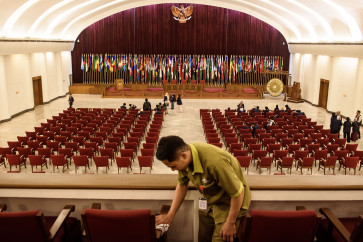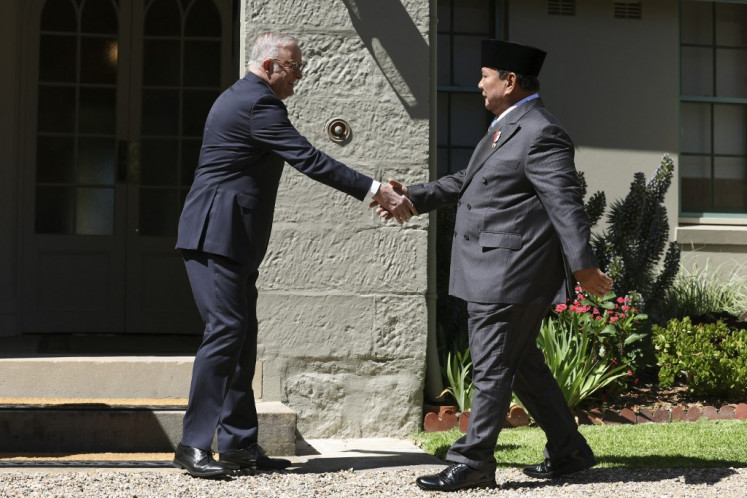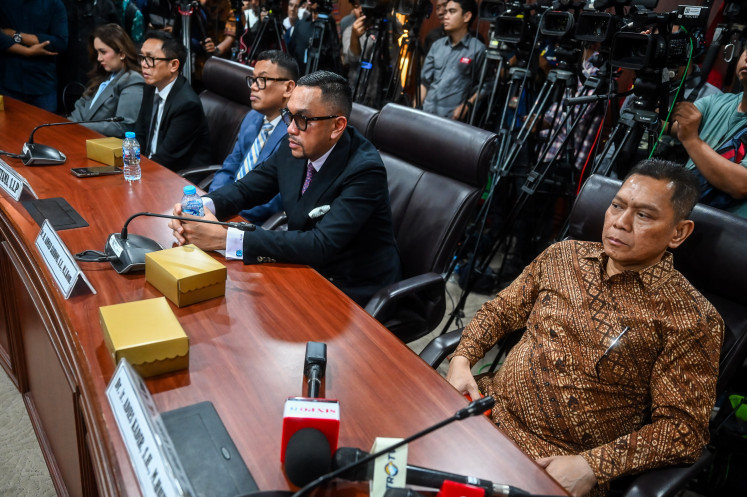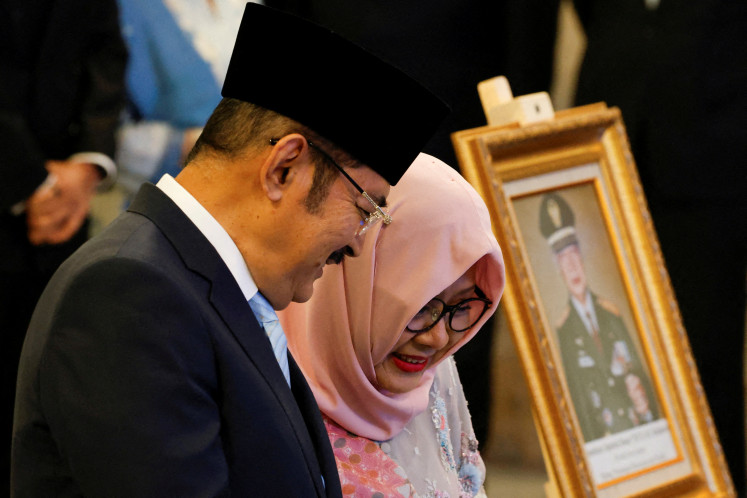Popular Reads
Top Results
Can't find what you're looking for?
View all search resultsPopular Reads
Top Results
Can't find what you're looking for?
View all search resultsEditorial: Integrated transportations
A plan by the Jakarta city administration to launch the operation of Transjakarta feeder bus routes is a small but important step toward an integrated public transportation system in the city
Change text size
Gift Premium Articles
to Anyone
A
plan by the Jakarta city administration to launch the operation of Transjakarta feeder bus routes is a small but important step toward an integrated public transportation system in the city. Such an integrated system is badly needed in order to facilitate existing users and encourage the millions of motorcyclists and private car owners to convert to public transportation.
Jakarta Transportation Agency chief Udar Pristono said Monday that three feeder routes would begin operating in August. These would be followed by operation of four additional routes later this year.
The three feeders will serve the West Jakarta municipal office to a busway shelter on Jl. Daan Mogot in West Jakarta; Tanah Abang railway station to a Transjakarta shelter near City Hall in Central Jakarta; and Sudirman Central Business District (SCBD) to Senayan, also in Central Jakarta.
Why is the feeder service important? It cannot be denied that improved public transportation service is the only answer to daily Jakarta gridlock, as the existing roads can no longer accommodate the increasing number of vehicles. The existing integrated transportation system is part of the reason residents are reluctant to shift to public transportation.
There have been efforts by private companies, particularly housing developers in satellite cities such as Bekasi, Tangerang and Bogor, to facilitate their respective residents with bus services — known as feeders — which are connected to the Transjakarta busway. There have been efforts by Transjakarta busway and the railway company to connect their services, similar to what has been pioneered at the Sudirman station in Central Jakarta.
Additional connections among public transportation modes will not only facilitate the needs of people who use public transportation, but would also provide benefits to the operators, as they would feed each other.
However, the city administration needs to remain consistent with its plan to open more feeder services to facilitate the shift to public transportation. The city administration might cooperate with existing private bus operators for opening new feeder routes.
But, of course, it will not be enough. There are still many things to do — both by the central government and the city administration — to improve the condition of public transportation in the city. The city administration has to deploy more buses to all corridors of the Transjakarta busway, assuming that busway passengers will increase after opening the feeder routes. Without more buses in operation, the Transjakarta busway service will worsen.
On the other hand, the central government needs to go ahead with efforts to improve railway services, as they have become the backbone of commuter transportation.
Apart from service improvements to existing public transportation, both the central government and the city administration also need to be consistent with their plans to develop additional modes of public transportation, including Mass Rapid Transit (MRT), monorail and others.
With the commitment of all parties on improving service, public transportation is expected to become the main instrument of mobility for people in Greater Jakarta. An improved system will surely ease the city’s overburdened roads. Most importantly, it will help prevent the city from experiencing total traffic gridlock, which is predicted to be inevitable if the authorities fail to addresss current traffic problems.










